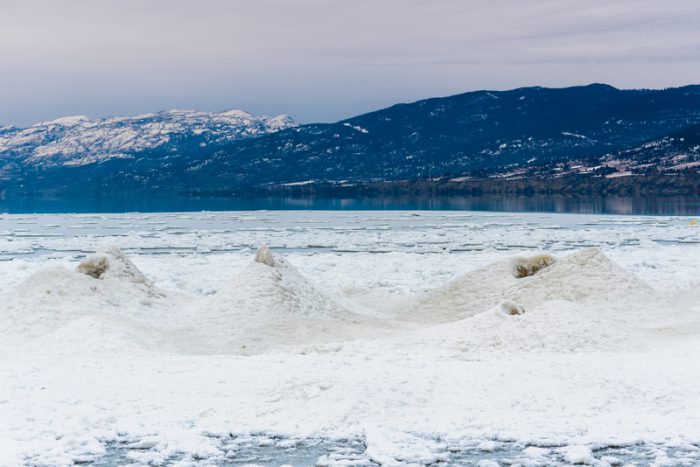All across Canada, winter has really taken hold. That's not a complaint, by the way—it's what is supposed to happen!
And happen it has, with a huge 'bomb cyclone' currently bringing intense snow storms and Arctic air to the eastern coast of Canada and the United States. (For some words on what a bomb cyclone is, check out this post here.)
Meanwhile in the area around the Great Lakes, the ground is still covered in several feet of snow brought by a mid-January storm two weeks ago. And the combination of frigid temperatures, snow, and some high winds has brought some fascinating formations back to the shores of lakes.
Ice volcanoes and mounds.
An ice illusion
In a previous post, we talked about how these form. They actually have some small similarities to real volcanoes.
As sheets of ice form on the lake's surface, they don't always remain in place. Waves and winds can push them against each other and against the shore. Eventually, this can cause cracks and holes in the surface, as well as piles of ice. In some cases, lake water gets pushed up through these holes by waves. As this water pops through, some of it freezes around the hole. Then more, and more.
Eventually a small 'mountain' is formed. An ice volcano.
(Something sort of like this process is what forms mountains and volcanoes, except instead of ice sheets and water, it's with huge tectonic plates of the Earth's crust and hot magma!)
Stay safe on the lake
If this all sounds really cool and like something that you want to see for yourself, we understand. But from Lake Ontario to Lake Huron to Lake Superior and beyond, police and rescue workers are warning people to not wander out to the ice mounds.
Ice shelves are forming at various locations along Lake Ontario's shoreline. Nifty to look at, but not safe to explore. While the water is shallow underneath, if you pop through, you may not get out.
Remember: No ice is 100% safe.
[Illustration: Tom Gill, with consent] pic.twitter.com/utZEZ722H5
— Halton Police (@HaltonPolice) January 25, 2022
Holes in the ice can be very unpredictable and extremely dangerous. In these cases, it can be very difficult to know where the shore ends and the lake begins. Even then, what might look like ice that is a metre thick for hundreds of metres out can be full of thin weak points.
So you can marvel at the power of winter in action! Just keep your distance and never visit the lake without your family and sticking together as a group.
Watch this video below to see this phenomenon up close!
 Ice volcanoes, like these ones on Lake Okanagan in B.C., can happen in winter if the conditions are right. (ID 144239942 © Amidchaos9 | Dreamstime.com)
Ice volcanoes, like these ones on Lake Okanagan in B.C., can happen in winter if the conditions are right. (ID 144239942 © Amidchaos9 | Dreamstime.com)









